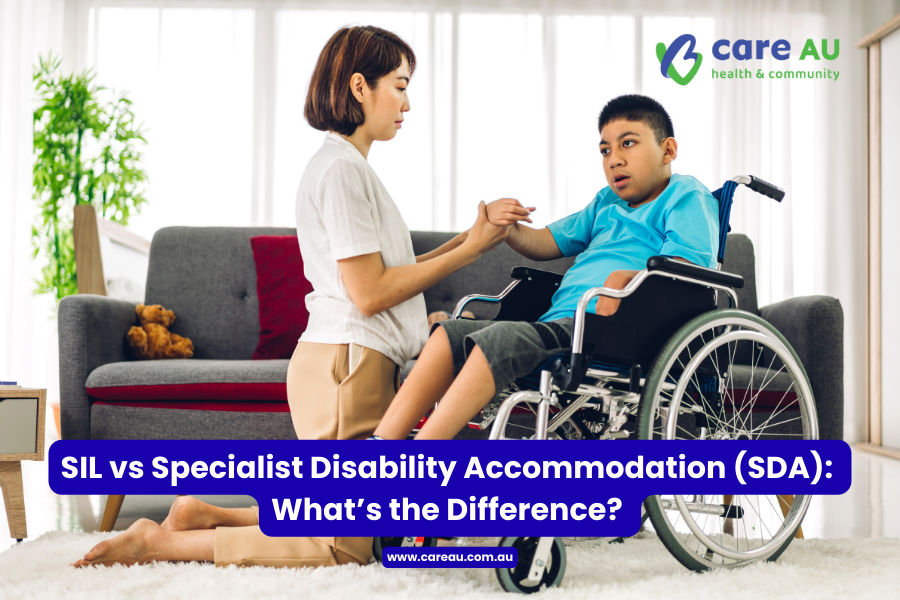Table of Contents
SIL vs Specialist Disability Accommodation (SDA): What’s the Difference?
What is SIL?
Supported Independent Living (SIL)is a support type system which is intended to assist individuals in need of assistance with their daily living in their residence or a shared living accommodation. SIL offers help with cooking, cleaning, personal care, budgeting, and medication management activities. The focus is support, not housing ownership.
What is SDA?
Specialist Disability Accommodation (SDA) is a form of housing and is provided by the NDIS that works on the physical setting as opposed to the daily personal support. SDA offers functional homes that are tailor made and focused on those who have extreme functional impairment or very high support needs.
Key Differences Between SIL and SDA
Feature | SIL (Supported Independent Living) | SDA (Specialist Disability Accommodation) |
Purpose | Provides support to help with daily living | Provides specialized housing to meet accessibility and safety needs |
Funding | Funding is for support services | Funding is for housing; some participants may receive both SIL and SDA |
Focus | Personal care, skill-building, and daily assistance | Accessible, safe, and adaptive housing structures |
Ownership | Residents typically rent or share a home | Properties are usually owned by providers |
Summary | Helps you live independently | Focuses on where you live and how the home is built for your needs |
SIL and SDA Together
SIL Funding NDIS
NDIS SDA Housing and Funding
Supported Independent Living vs Specialist Disability Accommodation
- SIL: Focus on support, daily living assistance, independence, skill-building.
- SDA: Focus on housing, property design, accessibility, safety features.
SIL Housing Support
SDA Housing Support
SIL and SDA Eligibility
Choosing Between SIL and SDA
- Support needs: Do you require assistance with your daily living activities, or do you require a specially designed household?
- Independence: SIL is good at skill-building and day-to-day assistance, whereas SDA is safe and available.
- Funding: Know the difference between funding of your plan and housing.
- Long-term goals: consider where you would wish to reside and the level of independence that you would wish to enjoy.
Final Thoughts
Understanding the difference between SIL and SDA is crucial for NDIS participants. SIL focuses on personal support and daily assistance, while SDA focuses on housing design and accessibility. Many participants benefit from both, combining safe housing with tailored support.
At Care Au, we provide guidance and services to help you navigate SIL and SDA options. Whether you need NDIS SIL accommodation, SDA housing support, or advice on choosing between SIL and SDA, our team can help you make informed decisions and find the right support for your needs.
Need help getting started? Contact Care Au today. We’re happy to guide you through the process.

